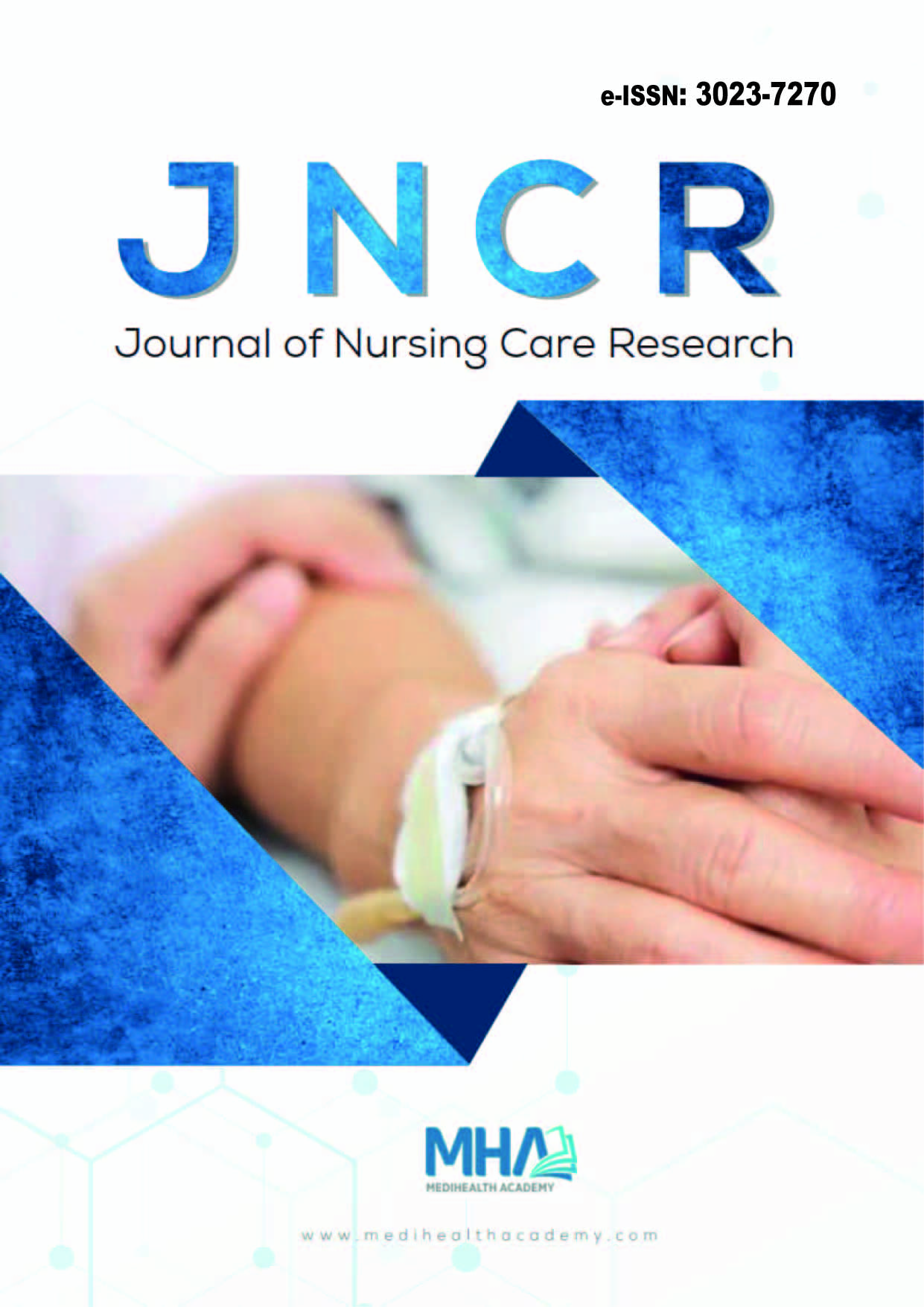Alyami, H.S., Orabi, M.A., Aldhabbah, F.M., Alturki, H.N., Aburas, W.I.,Alfayez, A.I., ... & Alsuhaibani, N.A. (2020). Knowledge about COVID-19 andbeliefs about and use of herbal products during the COVID-19 pandemic: Across-sectional study in Saudi Arabia. Saudi Pharmaceutical J, 28(11),1326-1332.
Ak, N., & Baran Aksakal, F. N. (2020). Bazı aile sağlığı merkezlerinebaşvuranların geleneksel ve tamamlayıcı tıp uygulamaları ile ilgili bazıbilgi ve tutumları. J Tradition Med Complement Therapies, 3(2). 221784210.
Aktaş, B. (2017). Hemşirelik öğrencilerinin bütüncül tamamlayıcı vealternatif tıbba karşı tutumları. JAREN, 3(2),55-59.
Çelik, D., & Köse, Ş. (2020). Erişkinlerde COVID-19: klinik bulgular.Tepecik Eğitim Araşt Hast Derg, 30(2),43-48.
Demir, G., Kılıçkalkan, B., & Takak, M.K. (2021). COVID-19 pandemisisürecinde yetişkinlerin besin destekleri kullanımlarının incelenmesi.Genel Tıp Derg, 31(4),430-439.
Doğru F, Şahbaz RP. (2020). Geleneksel ve tamamlayıcı Tıp; Türkiye’dekiuygulamalar üzerine bir değerlendirme. Geleneksel Tamamlayıcı Tıp Derg.3(1):107-18.
Erişen, M.A., & Yılmaz, F.Ö. (2020). COVID-19 pandemisi dönemindebireylerin harcamalarının incelenmesi. Gaziantep University J Social Sci,19(COVID-19 Special Issue), 340-353.
Ganjhu, R.K., Mudgal, P.P., Maity, H., Dowarha, D., Devadiga, S., Nag, S.,& Arunkumar, G. (2015). Herbal plants and plant preparations as remedialapproach for viral diseases. Virusdisease, 26,225-236.
Harris, P.E., Cooper, K.L., Relton, C., & Thomas, K.J. (2012). Prevalenceof complementary and alternative medicine (CAM) use by the generalpopulation: a systematic review and update. Intern J Clin Pract, 66(10),924-939.
Hwang, J.H., Cho, H.J., Im, H.B., Jung, Y.S., Choi, S.J., & Han, D. (2020).Complementary and alternative medicine use among outpatients duringthe 2015 MERS outbreak in South Korea: a cross-sectional study. BMCComplement Med Therapies, 20,1-10.
Işık, M. T., & Rana, C. (2021). Bir grup hemşirelik öğrencisinin COVID-19riskine yönelik koruyucu, geleneksel ve tamamlayıcı tıp uygulamaları.Mersin Üniversitesi Tıp Fakültesi Lokman Hekim Tıp Tarihi ve Folklorik TıpDergisi, 11(1), 94-103.
Kamarlı Altun H., Seremet Kürklü N., & Karaçil Ermumcu M Ş. (2022).COVID-19 pandemi döneminde erişkinlerde besin takviyeleri ve bitkiselürünlerin artan kullanımı: Kesitsel bir araştırma. Turkiye Klinikleri JHealth Sci. 7(1), 29-35.
Karataş, Y., Khan, Z., Bilen, Ç., Boz, A., Özagil, E.S.G., Abussuutoğlu, A.B.,& Rahman, H. (2021). Traditional and complementary medicine use andbeliefs during COVID-19 outbreak: a cross-sectional survey among thegeneral population in Turkey. Advances Integrat Med, 8(4),261-266.
Kocabaş, D., Erdal, E., & Demir, M. (2019). Sağlık hizmeti kullanımındabireylerin geleneksel ve alternatif yöntemlere ilişkin tutumlarınındeğerlendirilmesi. Bolu Abant İzzet Baysal Üniversitesi Sosyal BilimlerEnstitüsü Dergisi, 19(1),63-80.
Lake, M.A. (2020). What we know so far: COVID-19 current clinicalknowledge and research. Clinic Med, 20(2),124-127.
Lemeshow S, Hosmer D, Klar J, & Lwanga SJHTA. (1990). Under the titleadequacy of sample size in health studies by World Health Organization.https:// apps.who.int/iris/bitstream/handle/10665/41607/0471925179_eng.pdf?sequence=1&isAllowed=y. Access Date: 10.07.2021
Liu, X., Zhang, M., He, L., & Li, Y. (2012). Chinese herbs combined withWestern medicine for severe acute respiratory syndrome (SARS). CochraneDatabase of Systematic Reviews, (10): CD004882.
Macit, M.S. (2020). Covid-19 salgını sonrası yetişkin bireylerin beslenmealışkanlıklarındaki değişikliklerin değerlendirilmesi. Mersin ÜniversitesiSağlık Bilimleri Dergisi, 13(3), 277-288.
Marcel, S., Christian, A.L., Richard, N., Silvia, S., Emma, H., Jacques,F., ... & Nicola, L. (2020). COVID-19 epidemic in Switzerland: on theimportance of testing, contact tracing and isolation. Swiss Medical Weekly,150, w202205.
Metcalfe, A., Williams, J., McChesney, J., Patten, S.B., & Jetté, N. (2010).Use of complementary and alternative medicine by those with a chronicdisease and the general population-results of a national population basedsurvey. BMC Complement Alternat Med, 10, 1-6.
Nural, N., & Çakmak, S. (2018). Kronik hastalığı olan bireylerintamamlayıcı ve alternatif tedavileri kullanma durumu. J Tradition MedComplement Therapies, 1(1), 1-9.
Oral, B., Öztürk, A., Balcı, E., & Sevinç N. (2016). Aile sağlığı merkezinebaşvuranların geleneksel /alternatif tıpla ilgili görüşleri ve kullanımdurumu. TAF Prev Med Bull.15(2):75-82.
Özenoğlu, A., Çevik, E., Çolak, H., Altıntaş, T., & Alakuş, K. (2021).Changes in nutrition and lifestyle habits during the COVID-19 pandemicin Turkey and the effects of healthy eating attitudes. Mediterranean Journalof Nutrition and Metabolism, 14(3), 325-341.
Özenoğlu, A., & Gülbahar, S.D.G. (2020). COVID-19 Tedavi Belirleyicileri:COVID-19 Pandemisinde fiziksel ve mental sağlığın korunmasındabeslenme ve mikrobesinler. 35.
Rao, K.S., Suryaprakash, V., Senthilkumar, R., Preethy, S., Katoh, S.,Ikewaki, N., & Abraham, S. J. (2020). Role of immune dysregulation inincreased mortality among a specific subset of COVID-19 patients andimmune-enhancement strategies for combatting through nutritionalsupplements. Front Immunol, 11, 559886.
Shah, K., Saxena, D., & Mavalankar, D. (2021). Vitamin D supplementation,COVID-19 and disease severity: a meta-analysis. QJM: An InternationalJournal of Medicine, 114(3), 175-181.
Solmaz, T., & Altay, B. (2019). Üniversite öğrencilerinin tamamlayıcı vealternatif tedavi yöntemlerini kullanma durumları. Pamukkale Med J,12(3), 387-393.
Syed, I. A., Sulaiman, S.A.S., Hassali, M.A., Thiruchelvam, K., Syed, S.H.,& Lee, C.K. (2016). Beliefs and practices of complementary and alternativemedicine (CAM) among HIV/AIDS patients: A qualitative exploration.European J Integrat Med, 8(1), 41-47.
WHO. Traditional, complementary and integrative medicine. https://www.who.int/health-topics/traditional-complementary-and-integrative-medicine#tab=tab_1
Yang, J., Zheng, Y., Gou, X., Pu, K., Chen, Z., Guo, Q., ... & Zhou, Y. (2020).Prevalence of comorbidities in the novel Wuhan coronavirus (COVID-19)infection: a systematic review and meta-analysis. Int J Infect Dis, 94(1),91-95.
Yılmaz, E., Sezen, F. S., Çan, G., Renda, G., Sanrı, H., Dilaver, İ., ... &Demirtaş, Y. (2018). Aile hekimleri ve eczacıların bitkisel ürün kullanımınayaklaşımları: Trabzon ilinde pilot çalışma. Türkiye Aile Hekimliği Dergisi,22(3), 141-156.
Yılmaz, H.İ., Turğut, B., Çıtlak, G., Oğulcan, M., Paralı, B., Engin, M., ... &Alimoğlu, O. (2021). Türkiye’de insanların COVID-19 aşısına bakışı. DicleTıp Dergisi, 48(3), 583-594.
Zhou, P., Yang, X. L., Wang, X. G., Hu, B., Zhang, L., Zhang, W., ... & Shi,Z. L. (2020). A pneumonia outbreak associated with a new coronavirus ofprobable bat origin. Nature, 579(7798), 270-273.

